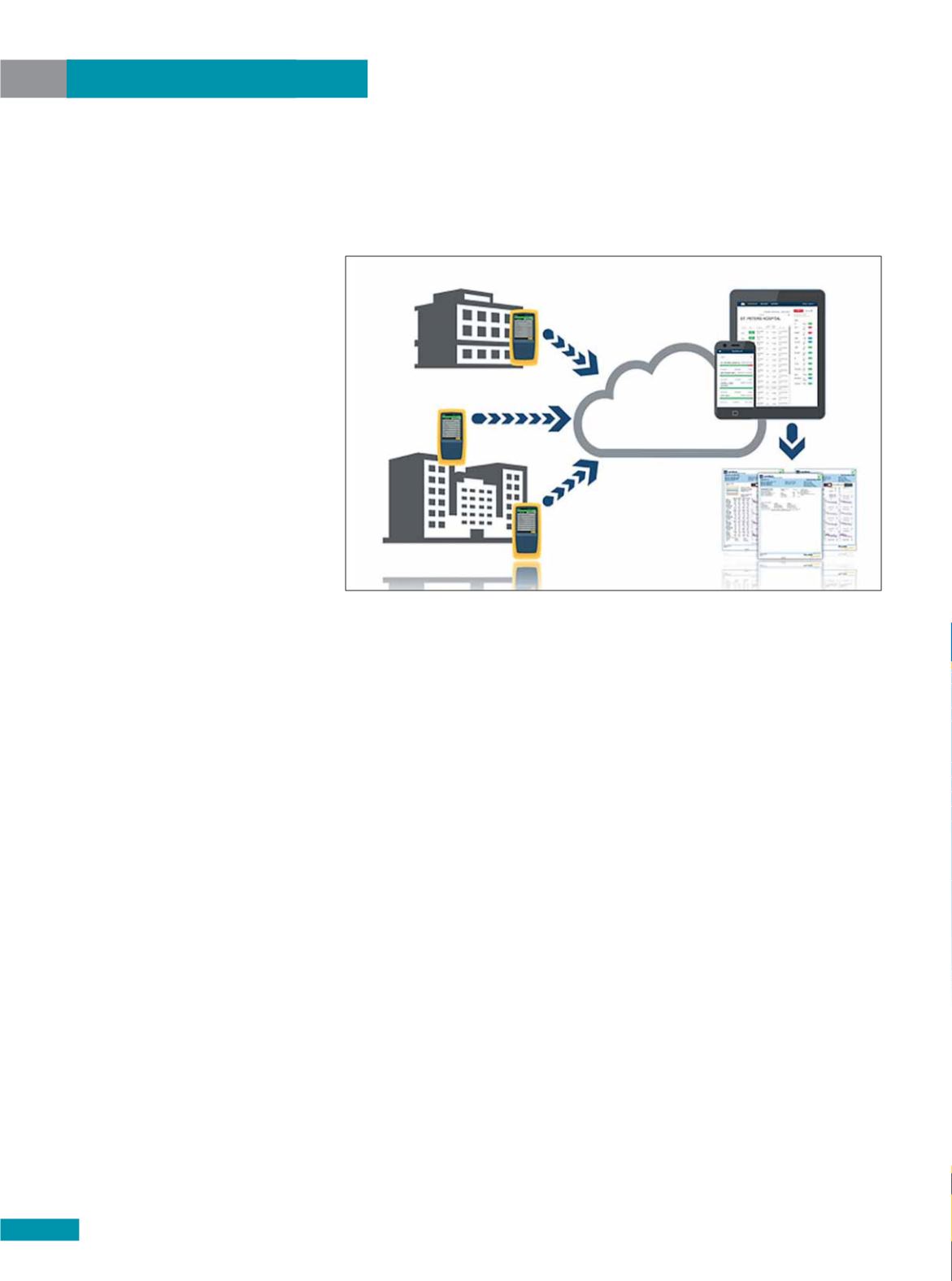

8 0
C AB L I NG CONNE CT I ON
AUTUMN 2 01 5
TOOLS
To the cloud!
D
ata-communications installers
certify cabling systems for many
reasons, including supporting
manufacturer warranty requirements,
meeting customer qualifications or just to
ensure quality workmanship. Managing
the results generated by the testers is a
critical yet time-consuming part of the
certification process.
In a recent Fluke Networks survey of
880 installers worldwide, the respondents
reported installing an average of 1,026
links in just the prior month. The job of
consolidating all those tests into a single
report can be time-consuming and is a
source of considerable cost. In another
survey, 77% of installers reported having to
deal with results management issues in the
prior month.
RESULTS MANAGEMENT ISSUES
Customers report a number of problems
in results management that take up time.
The most common three problems are:
>
Cable identifiers in the reports don’t
match the specifications and need to be
manually edited;
>
Multiple test types (copper, fibre tier 1,
tier two, different standards) need to be
combined into a single report;
>
Reports have to be reworked because
they are incomplete.
Contractors report spending 7.9 hours
per month, nearly a full day, on these issues.
This is in addition to the time required
to get the results (typically stored in the
tester) from the job site back to the office
where the results management takes place.
This also takes a tester out of circulation,
which may impact other jobs.
The more testers you have, the more
complex it gets.
For a contractor using a single tester on
a single job, these problems are significant.
But very few contractors have the luxury
of dedicating a single tester to a single
job at a time. To maximise efficiency, most
contractors own or rent multiple testers
and use them on multiple concurrent jobs.
Properly keeping track of results under
these conditions becomes even more
difficult, leading to a whole new set of
issues including:
>
Test results stored in multiple testers,
which have to be hunted down and the
results consolidated.
>
Tests from another job get into the
report by mistake and have to be
removed.
>
Generating a report and discovering not
all the links were tested, so a crew has to
return to the site to finish the job.
Installers report spending, on average,
another 7.3 hours per month on these issues,
for a total of nearly two days a month. And
the more testers owned by a company, the
larger the scope of the reported problem. A
related issue cited by customers is the lack of
visibility in keeping track of job status under
these circumstances.
WORST-CASE SCENARIO
Other, less common, problems can be far
worse. With tens of thousands of testers on
the market, there may be many problems
organisations have not even considered
such as how to recover inadvertently
erased or corrupted memory cards which
store the results. Unfortunately, in most
cases, the only answer is to perform all the
tests again.
Testers or memory cards with results
stored on them can also be lost or stolen,
requiring retesting. Thankfully, these are not
common problems, because a single lost
tester or erased data card can mean losing a
Fluke Networks Asia Pacific
vice president of sales
Simon
Lee
explains how cloud-based
reporting tools can help cable
installers increase efficiency
and profitability.
Cloud-based tools can help cable installers increase efficiency and profitability.
















